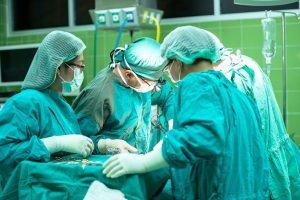1.4.3 Infection Control Measures
Isolation and infection control precautions are determined on the basis of known or suspected transmission of pathogens. It is important to consider the unknown when choosing what PPE to use for infection control purposes.
If you feel you are in possession of information that may change the status of an individual with regards to infection transmission, it is your duty to advise your supervisor so a process may begin to determine the needed infection control practices to apply to the situation. Your mandate in the medical community is to do no harm, which includes presenting information that may have a bearing on the infection control practices.
As you may recall from the previous chapter, Routine or Standard Precautions refers to the basic infection control measures recommended in all health care facilities to reduce the potential of pathogen transmission that causes infections. After an assessment of the client’s medical status is completed, the correct precautions to prevent infection transmission will be decided, and the client may or may not be placed on additional precautions (Public Health Ontario, 2012a). Please review Chapter 2 of Infection Control for this information if needed.

Additional Precautions (AP) refers to precautions (i.e., Contact Precautions, Droplet Precautions and Airborne Precautions) that are necessary in addition to Routine Practices for certain pathogens or clinical presentations. These precautions are determined based on the method of transmission (e.g., contact, droplet, airborne) (Public Health Ontario, 2012a).
Additional Precautions can include the use of additional PPE (e.g., shoe covers), and control of the environment that are put in place to limit encounters with the client/patient/resident or their immediate environment. In some instances, specialized engineering controls may be required (e.g., airborne infection isolation room for a patient with tuberculosis) or enhanced cleaning protocols for the client/patient/resident environment (e.g., Clostridium difficile (C. difficile), vancomycin-resistant enterococci (VRE)) (Public Health Ontario, 2012a). Additional precautions may also include the presence of screens, plexiglass barriers, or curtain barriers, as well as walls.
Additional Precautions can be subdivided into three categories based on the method of transmission:
- Airborne Precautions: Used in addition to Routine Practices for clients/patients/residents known or suspected of having an illness transmitted by the airborne route (i.e., by small droplet nuclei that remain suspended in the air and may be inhaled by others) (Public Health Ontario, 2012a). Precautions include airborne infection isolation room, or fit-tested N95 respirator for suspected tuberculosis.
- Contact Precautions: Used in addition to Routine Practices to reduce the risk of transmitting infectious agents via contact with an infectious person (Public Health Ontario, 2012a). Contact PPE includes gloves and gown if skin or clothing will come into direct contact with the client/patient/resident or his/her environment.
- Droplet Precautions: Used in addition to Routine Practices for clients/patients/residents known or suspected of having an infection that can be transmitted by large infectious droplets (Public Health Ontario, 2012a). Droplet PPE includes facial protection (i.e., mask, eyewear).
Another level of precautions that have been implemented in some facilities include Enhanced Barrier Precautions. This designation will be dependent on your employer’s policies. These precautions have been instituted with the emergence of an MDRO, also called a “superbug,” in a facility. Enhanced Barrier Precautions apply to all residents with wounds and/or indwelling medical devices (e.g., central lines, urinary catheter, feeding tube, tracheostomy/ventilator). According to the CDC (2019), high‐contact resident care activities that require gown and glove use include:
- Dressing
- Bathing/showering
- Transferring
- Providing hygiene (am and pm care)
- Changing linens
- Changing briefs or assisting with toileting
- Device care or use (e.g., central line, urinary catheter, feeding tube, tracheostomy/ventilator)
- Wound care (i.e., any skin opening requiring a dressing)
Practice Makes Perfect
Media Attributions
- Image by Sasin Tipchai from Pixabay

